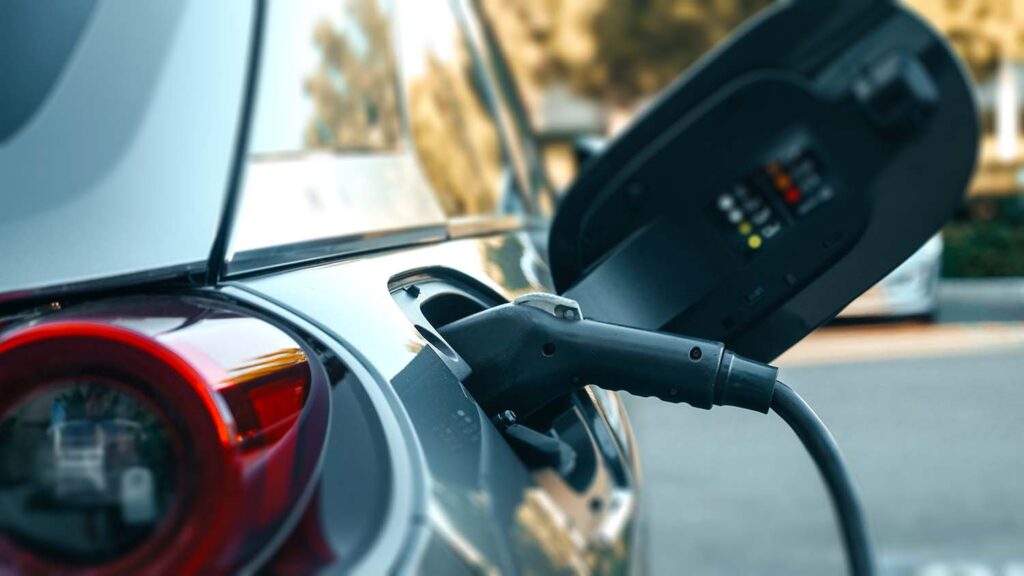The shift of the automotive industry to more sustainable powertrain technologies is opening up opportunities for new technologies. We asked Kevin Baughey, 3D Systems’ transportation segment leader, to give us his views on the increase in uses for additive manufacturing, and what this means for designs
The transformation taking place across the automotive and transport industry is broader than just the propulsion system, it is a change in the overall driving experience including autonomous or semi-autonomous driving as well as the associated vehicle to vehicle (V2V) and vehicle to infrastructure (V2I) interactions that provide a significantly expanded customer experience and value potential.
These have been driven by a series of global consumer, business model, and regulatory shifts in the past decade that are impacting the fundamental nature of the automotive mobility space.
One of the first things we must understand is that a transformational change like this means that all aspects of the automotive development, production, delivery, and service business will be impacted, and those that embrace this change and look to capitalise on the opportunities created will thrive.
A grave error would be viewing these as incremental activities and costs that must be added onto existing processes, creating additional overhead on an already competitive business with relatively thin margins. The service industry is often one of the last automotive business segments that are thought of regarding the industry transformation that is happening, however, in this case, it is arguably the segment that is the centerpiece of the transformation.
The automotive service industry happens to directly align with the portion of the automobile’s lifecycle that equates to the customer experience. Like all recent industry transformations related to new technologies and innovations, the consumer and the ecosystem are the levers to deliver value and drive additional growth.
In recent industry transformations, the ability to deliver innovation after the initial point of sale is fundamental – driving the emergence of new audio/video media streaming ecosystems, creating shifts in aircraft engine business models from selling engines to selling flight time, to the emergence of ride-share and home rental marketplaces.
These illustrations indicate how the automotive service industry is at the forefront of driving the electric vehicle and autonomous transformation happening in the mobility industry.
Drawing parallels to other transformations of this kind, there are certain characteristics that should be considered to effectively capitalise on the expanded value. The transformation in business models for industries that are leveraging a digital transformation includes some of the following characteristics:
- Crowd economies: More and more industries are seeing decentralised funding and in many cases decentralisation of assets. Consider Airbnb and VRBO are now the largest hotel chains without actually owning real estate
- Decentralised and Autonomous Organisations: Functions and activities that have traditionally been housed in the four walls of a single organisation are now found in many interconnected activities given the ability to collaborate, share, and streamline connections
- Transformation Economies: Markets are shifting from product- and service-based models to experience-based models. In this case, the shift is from buying a car to purchasing a ‘mobility experience’
- Closed-loop Economies: The viewpoint of the experience is from cradle-to-cradle rather than cradle-to-grave where the expectation is for zero waste
One of the key enabling technologies that provides an accelerator for these transformations is additive manufacturing. The technology has transformed since its inception in the ’80s with the incorporation of many technologies as well as a broad range of materials, and a much simpler interface for ease of adoption.
All of this has made 3D printing a viable solution to leverage, however many still look at it as just another production method that is ‘bolted on’ to the existing business model and operation. The technology and approach are much more than just a way to characterise a production method. AM enables unique benefits, like tool-less production capabilities; seamless digital innovation to physical part and production-grade materials.
A key aspect that contributes to additive manufacturing’s ability to transform the service value proposition is the barrier to adoption. As indicated, the technology has improved from a product and technology perspective in the recent past, and now we are seeing advancements in a solutions/applications view that pulls all of the elements together and from which a knowledge transfer can be achieved. This allows for a significant acceleration and broadening of additive adoption in the service industry.
These transformational innovations and advancements in additive manufacturing will be a key accelerator for electric vehicle, autonomous, and the next generation mobility experiences for the coming decades.
Just as automotive customers are now used to getting automatic software feature updates in service, they will be looking to get physical solutions contributing to a new experience well after the traditional point of sale.
This will extend far beyond just fixing existing solutions: Just as automotive customers are now used to getting automatic software feature updates in service, they will be looking to get physical solutions contributing to a new experience well after the traditional point of sale.
As I indicated previously, the service industry will be at the centre of defining and redefining the customer experience, leveraging this innovation and thus shifting the value model of the entire industry. The electric vehicle propulsion technology with the convergence in data and information ecosystems, coupled with the market viewpoint of mobility as a service will create massive opportunities for growth for those ready to adapt.
For those wanting to capitalise on these shifts it’s important to seek out the solutions and partners that will allow them to fully realise the benefits of AM – to drive the future of automotive and automotive service providers. Innovations in technologies like advanced materials and software solutions that drive easier adoption, expand the ecosystem of automotive service providers.
Those stakeholders that will capitalise on the electrification transformation understand that the automotive service industry will not just be impacted by, but will fundamentally contribute to the transformation happening in the automotive and mobility space.
The service industry will leverage capabilities and strategies that allow it to provide the maximum value to the customer experience transformation including decentralising manufacturing, transforming from products to experiences, and closing the loop through reduced waste and recycling/repurposing.
Additive manufacturing through trusted solutions provides an essential enabler for service companies making this contribution by delivering new experiences at production scale, with the properties suited for use, and with the quality and experience, a growing mobility customer expects.

Kevin Baughey is 3D Systems Segment Leader for Transportation & Motorsports, which sees him lead analysis for all ground transportation industries, leveraging this intelligence to define 3D Systems’ innovation in the sector. Baughey has previously worked at Ford, Dassault Systèmes and Pepsi Co, with experience of developing innovations across a broad set of domains






